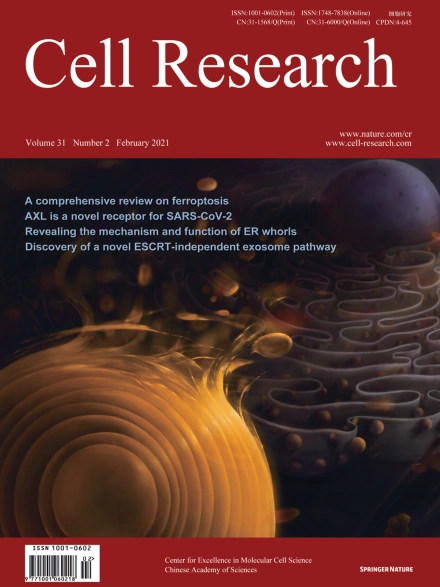
Advanced Search
Submit Manuscript
Advanced Search
Submit Manuscript
Volume 31, No 2, Feb 2021
ISSN: 1001-0602
EISSN: 1748-7838 2018
impact factor 17.848*
(Clarivate Analytics, 2019)
Volume 31 Issue 2, February 2021: 187-205 |
Stabilization of heterochromatin by CLOCK promotes stem cell rejuvenation and cartilage regeneration
Chuqian Liang1,2 , Zunpeng Liu2,3 , Moshi Song1,2,4 , Wei Li5 , Zeming Wu2,3 , Zehua Wang2,3 , Qiaoran Wang2,6 , Si Wang1,2,4,5 , Kaowen Yan1,2,4 , Liang Sun7 , Tomoaki Hishida8 , Yanning Cai5 , Juan Carlos Izpisua Belmonte8 , Pedro Guillen9 , Piu Chan5 , Qi Zhou2,3,4 , Weiqi Zhang2,4,6,10,* , Jing Qu2,3,4,* , Guang-Hui Liu1,2,4,5,*
1State Key Laboratory of Membrane Biology, Institute of Zoology, Chinese Academy of Sciences, Beijing 100101, ChinaAccumulating evidence indicates an association between the circadian clock and the aging process. However, it remains elusive whether the deregulation of circadian clock proteins underlies stem cell aging and whether they are targetable for the alleviation of aging-associated syndromes. Here, we identified a transcription factor-independent role of CLOCK, a core component of the molecular circadian clock machinery, in counteracting human mesenchymal stem cell (hMSC) decay. CLOCK expression was decreased during hMSC aging. In addition, CLOCK deficiency accelerated hMSC senescence, whereas the overexpression of CLOCK, even as a transcriptionally inactive form, rejuvenated physiologically and pathologically aged hMSCs. Mechanistic studies revealed that CLOCK formed complexes with nuclear lamina proteins and KAP1, thus maintaining heterochromatin architecture and stabilizing repetitive genomic sequences. Finally, gene therapy with lentiviral vectors encoding CLOCK promoted cartilage regeneration and attenuated age-related articular degeneration in mice. These findings demonstrate a noncanonical role of CLOCK in stabilizing heterochromatin, promoting tissue regeneration, and mitigating aging-associated chronic diseases.
https://doi.org/10.1038/s41422-020-0385-7